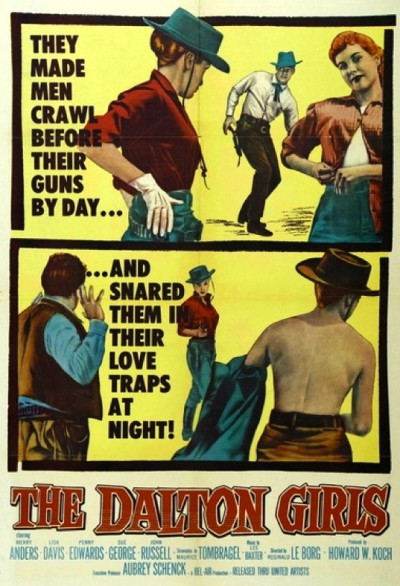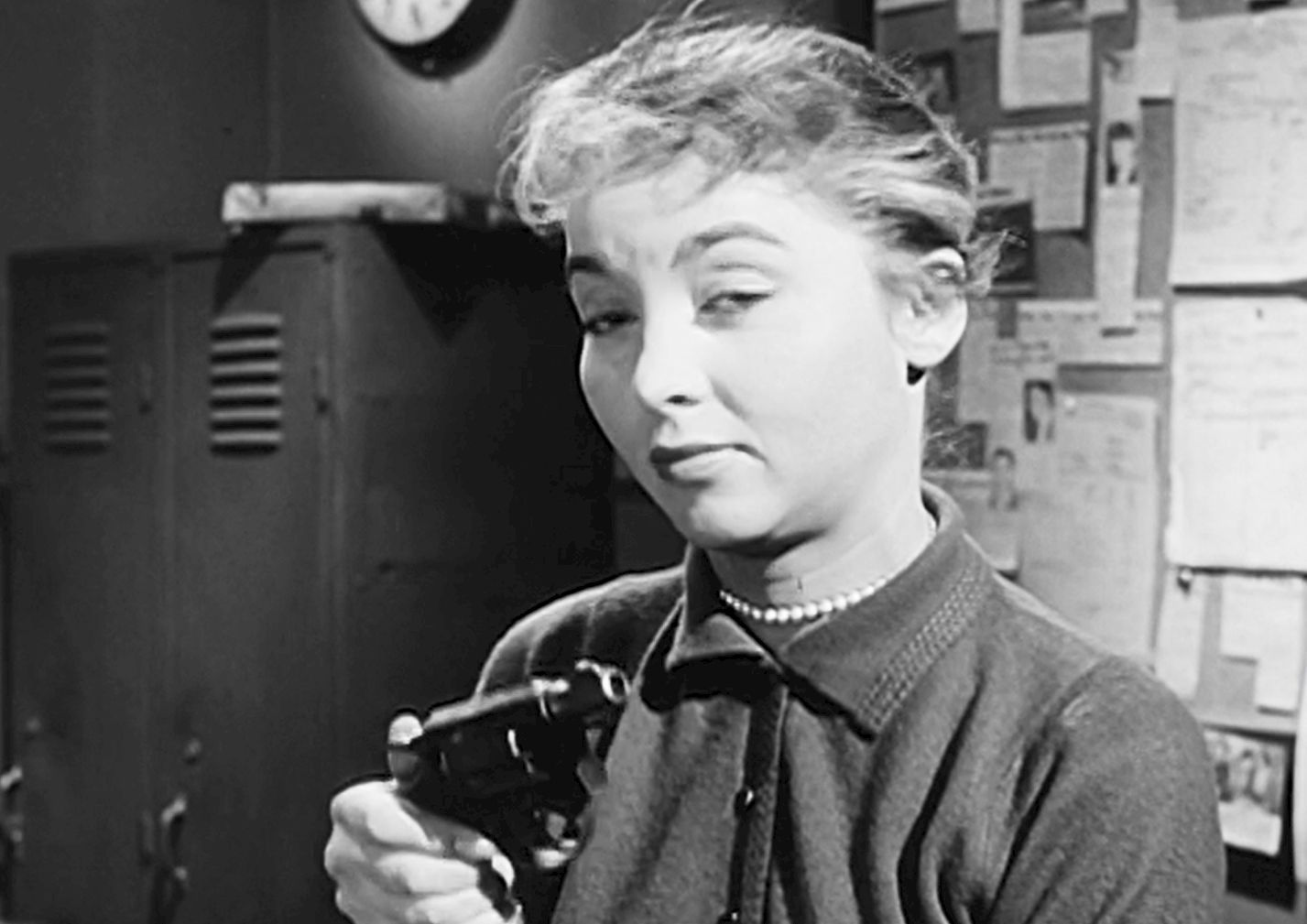
“Down the line, you name it, we’ve done it. Today, tomorrow, next week, we’ll pose as hostesses, society girls, models – anything and everything the department asks us to be. There are 249 of us in the department. We carry two things in common wherever we go: a shield, called a potsie, and a .32 revolver. We’re New York’s finest. We’re policewomen.”
— Patricia Jones, Episode 1
If you asked people what was the first American TV show to feature a policewoman, I suspect not many people would get the answer correct. Some might go with Cagney and Lacey. Others might be able to dig a little further back into their memories, and come up with either Get Christie Love! or Police Woman. Maybe some would include The Mod Squad. But the actual pioneer dates back more than fifteen years before Angie Dickinson began patrolling the streets of Los Angeles. The honour goes to Beverly Garland, the star of Decoy. While now largely forgotten, the show ran for 39 episodes on syndicated television, from October 1957 through the following July. It was also one of the first shows to film on location around New York, and the footage of those scenes is a remarkable time-capsule of life in that era.
Garland was already a well-established actress, her career having started with a role in 1949’s noir classic, D.O.A. She was Emmy-nominated for for her work on 1955’s Medic, and around the same time, was employed on a number of occasions with B-movie legend Roger Corman. Two of those films have already been covered here: Gunslinger and Swamp Women. I will not, however, be covering their work together on It Conquered the World… She later said of Corman, “Roger was always very professional, except when it came to putting us up in a good hotel or giving us a decent meal.” On that basis, the humdrum tedium of a television series might have come as a welcome break, albeit with a punishing schedule that offered little slack. She fell ill one week, during the filming of episode “Across the World”, and rather than pause filming, the script simply was rewritten to minimize her involvement.
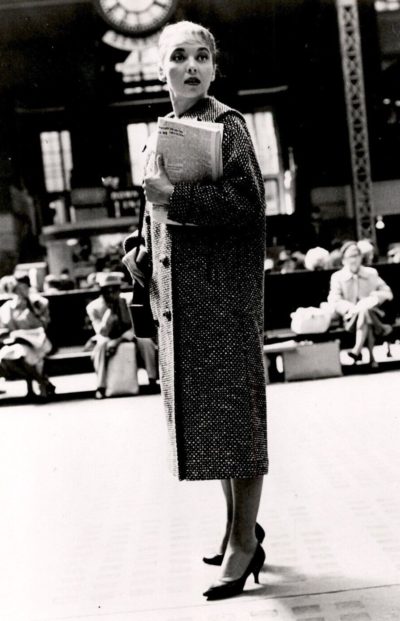 With a lot of voice-overs, the style feels reminiscent of Dragnet, which had been a very popular show for most of the fifties. Each episode opens with a stern reminder: “Presented as a tribute to the Bureau of Policewomen, Police Department, City of New York,” and centre on the cases worked by Patricia “Casey” Jones (Garland). As the title suggests, most of them involve Jones going undercover in some guise. That covers an extremely broad range of assignments, from a photographer to a junkie, a nurse to a blackmailer, a high society girl to a prisoner. However, some of the episodes do not require such subterfuge, though there is a tendency for these crimes she is given for investigation to be fairly gynocentric, e.g. trying to find a delinquent father.
With a lot of voice-overs, the style feels reminiscent of Dragnet, which had been a very popular show for most of the fifties. Each episode opens with a stern reminder: “Presented as a tribute to the Bureau of Policewomen, Police Department, City of New York,” and centre on the cases worked by Patricia “Casey” Jones (Garland). As the title suggests, most of them involve Jones going undercover in some guise. That covers an extremely broad range of assignments, from a photographer to a junkie, a nurse to a blackmailer, a high society girl to a prisoner. However, some of the episodes do not require such subterfuge, though there is a tendency for these crimes she is given for investigation to be fairly gynocentric, e.g. trying to find a delinquent father.
As well as the voice-overs, Jones would quite frequently break the fourth wall and address the audience directly – the quote at the top of the article is one such monologue. It feels quite groundbreaking, and is definitely helped by Garland’s commitment to delivering lines which, in other hands, could potentially seem cheesy. I was also genuinely impressed how gritty and, on occasion, dark the stories were, especially considering the era. Death is a frequent visitor, and the topics concerned get heavy, including drug abuse, mental illness and domestic abuse. While everything more or less ends up all right in the end, in that the guilty receive their just deserts, there is considerably more moral gray than I expected. Considering each episode is typically only 24 minutes long, they pack a lot in, and still manage to achieve a considerably emotional wallop on occasion.
Outside of Garland, there were no real “regulars”. The IMDb lists the next most frequent actors, such as Frank Campanella, who played Lieutenant Cella, as appearing in only three episodes. However, there were a lot of faces who made guest appearances, that would go on to more significant roles later in their careers. Those include Ed Asner, Peter Falk, Larry Hagman, Diane Ladd, Al Lewis and Suzanne Pleshette. They helped the show receive warm reviews, Billboard praising Garland in particular: “Aided by a versatile acting range – and a camera-soothing face which combines the high-cheekboned femininity of Greer Garson with the sexiness of Sophia Loren – she manages to be simultaneously a convincing New York City cop and the kind of girl who would make a charge account at Cartier’s worthwhile.” They proclaimed, “Not since Marilyn’s famed walkaway in Seven Year Itch has the camera ogled such a distracting New York pedestrian.”
It’s difficult to be sure whether or not the show was a success, operating as it did outside of the traditional network in the syndicated marketplace. The pre-sales appear to have been brisk with one bulk pre-release sale covering half of the $1.2 million cost for the entire 39-episode run. However, in May 1958, as production was drawing to a close on the first season, the plug was pulled on further episodes, allegedly because producers lacked sufficient funds to continue. The concept of a series about a policewoman would go back into the vaults for years, but Garland would continue her career over the coming decades, both in television and movies. She eventually became the go-to actress when a mom was needed, filling that role in My Three Sons, The Scarecrow and Mrs. King and Lois & Clark: The New Adventures of Superman.
Her legacy in this show stands the test of time surprisingly well. While it may feel dated in a number of aspects (there’s so much smoking!), the character of Casey feels decades ahead of its time. There’s no fluff, in the sense of romantic liaisons: indeed, we know very little about Jones’s life outside of the force. The short-form approach just doesn’t have time to mess around with extraneous filler like that. While it frequently deals with moral issues, the show doesn’t use itself as a platform to lecture the viewer: you’re left to draw your own conclusions. Certain recent works could learn a thing or two there. She’s respected by her colleagues, and it’s no surprise Garland would say that women often told her she inspired them to join the police force. It’s a show that deserves more recognition than it has received, and with many of the episodes in the public domain, is ripe for rediscovery.
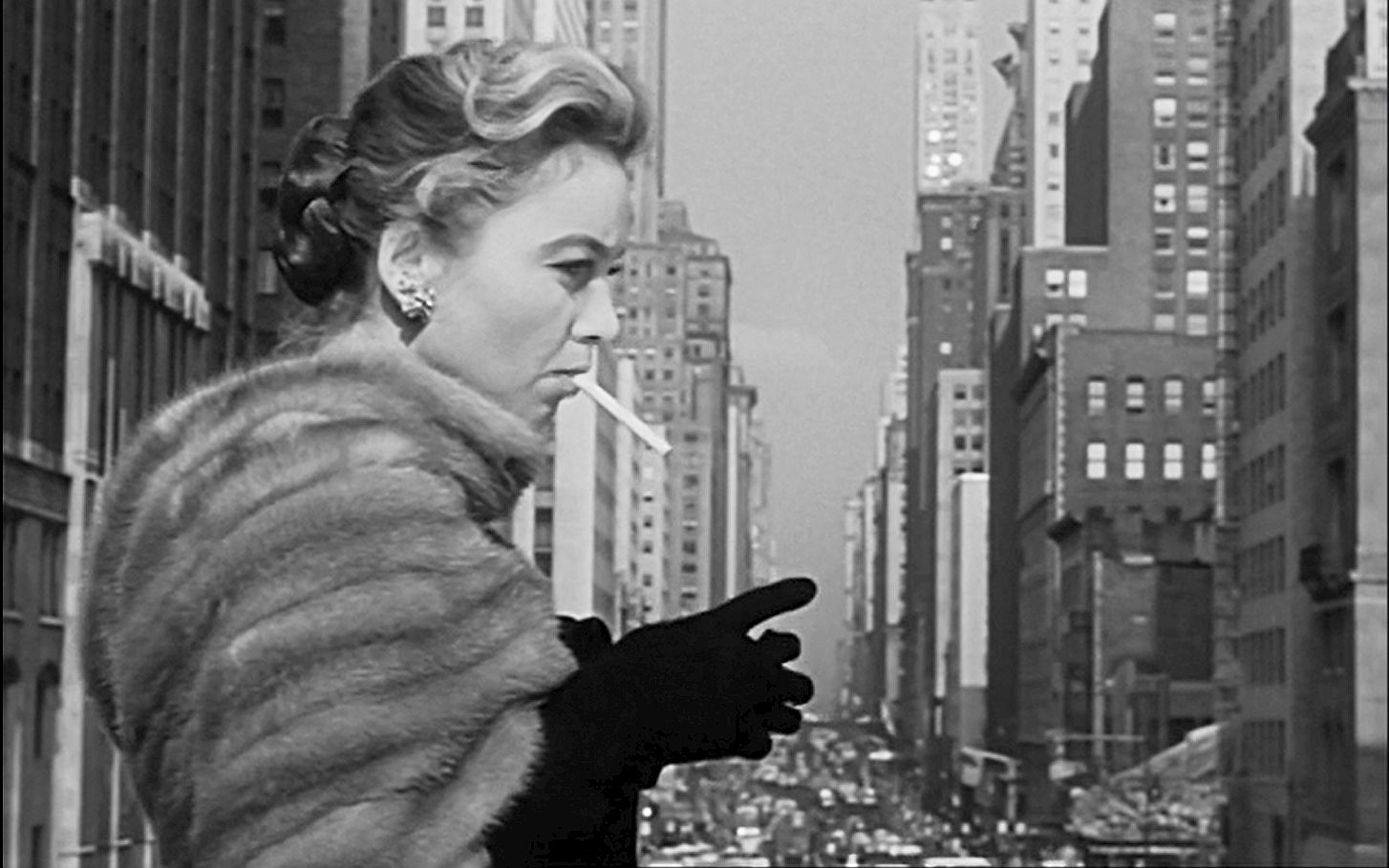
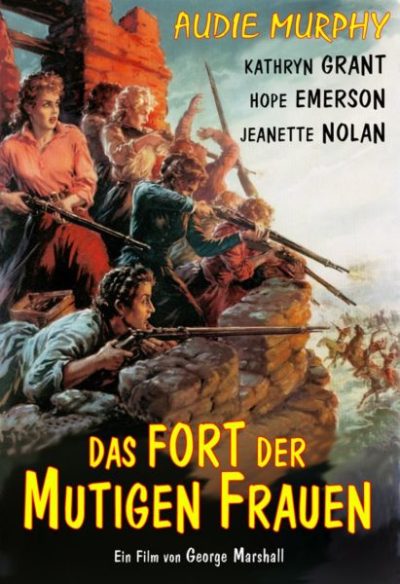 This is one where you need to take the era into account. Made in 1957, this was based on a short story from a couple of years earlier: “Petticoat Brigade” by Chester William Harrison. It’s very much an Audie Murphy movie – and understandably so, since the man was a bona fide hero, being one of the most-decorated American combat soldiers in World War II, before he became an actor. But the fifties was not a decade known for strong, independent female characters in Hollywood Westerns. We’ve covered a few: Woman They Almost Lynched and Johnny Guitar are likely the best. However, this works mostly because of the matter-of-fact way in which it depicts them, in contrast to the other example where they’re portrayed as unusual.
This is one where you need to take the era into account. Made in 1957, this was based on a short story from a couple of years earlier: “Petticoat Brigade” by Chester William Harrison. It’s very much an Audie Murphy movie – and understandably so, since the man was a bona fide hero, being one of the most-decorated American combat soldiers in World War II, before he became an actor. But the fifties was not a decade known for strong, independent female characters in Hollywood Westerns. We’ve covered a few: Woman They Almost Lynched and Johnny Guitar are likely the best. However, this works mostly because of the matter-of-fact way in which it depicts them, in contrast to the other example where they’re portrayed as unusual.





 With a lot of voice-overs, the style feels reminiscent of Dragnet, which had been a very popular show for most of the fifties. Each episode opens with a stern reminder: “Presented as a tribute to the Bureau of Policewomen, Police Department, City of New York,” and centre on the cases worked by Patricia “Casey” Jones (Garland). As the title suggests, most of them involve Jones going undercover in some guise. That covers an extremely broad range of assignments, from a photographer to a junkie, a nurse to a blackmailer, a high society girl to a prisoner. However, some of the episodes do not require such subterfuge, though there is a tendency for these crimes she is given for investigation to be fairly gynocentric, e.g. trying to find a delinquent father.
With a lot of voice-overs, the style feels reminiscent of Dragnet, which had been a very popular show for most of the fifties. Each episode opens with a stern reminder: “Presented as a tribute to the Bureau of Policewomen, Police Department, City of New York,” and centre on the cases worked by Patricia “Casey” Jones (Garland). As the title suggests, most of them involve Jones going undercover in some guise. That covers an extremely broad range of assignments, from a photographer to a junkie, a nurse to a blackmailer, a high society girl to a prisoner. However, some of the episodes do not require such subterfuge, though there is a tendency for these crimes she is given for investigation to be fairly gynocentric, e.g. trying to find a delinquent father.
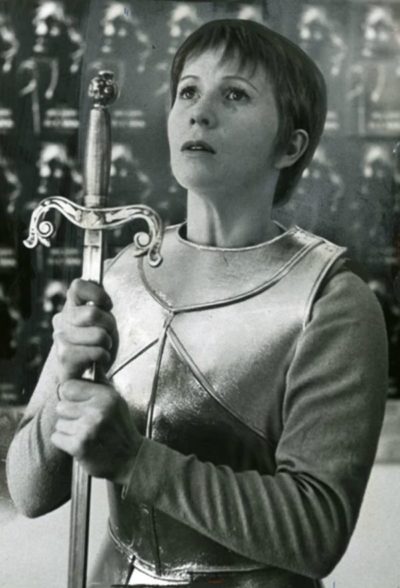 This was originally a French play, L’Alouette, written by Jean Anouilh in 1952. Three years later, a translated version was brought to Broadway, where it ran for 226 performances from November 1955 until June 1956. Julie Harris played Joan, and there was quite a star-studded cast behind her, including Boris Karloff as Bishop Cauchon, Christopher Plummer and Theodore Bikel. It was critically acclaimed, Harris winning that year’s Tony Award as Best Leading Actress, and Karloff being nominated as Best Leading Actor. The following February, a TV adaptation was screened in the United, though wasn’t the first or the last such. In November 1956, the BBC screened their version, with Hazel Penwarden as Joan, and a supporting cast including Michael Caine. Additionally, 1958 saw an Australian version, though it seems notable only for having Olivia Newton-John’s father in the cast.
This was originally a French play, L’Alouette, written by Jean Anouilh in 1952. Three years later, a translated version was brought to Broadway, where it ran for 226 performances from November 1955 until June 1956. Julie Harris played Joan, and there was quite a star-studded cast behind her, including Boris Karloff as Bishop Cauchon, Christopher Plummer and Theodore Bikel. It was critically acclaimed, Harris winning that year’s Tony Award as Best Leading Actress, and Karloff being nominated as Best Leading Actor. The following February, a TV adaptation was screened in the United, though wasn’t the first or the last such. In November 1956, the BBC screened their version, with Hazel Penwarden as Joan, and a supporting cast including Michael Caine. Additionally, 1958 saw an Australian version, though it seems notable only for having Olivia Newton-John’s father in the cast.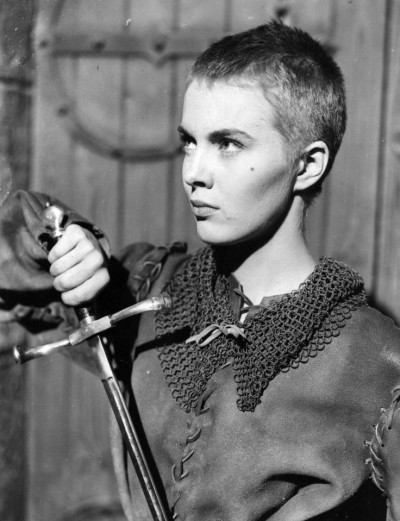
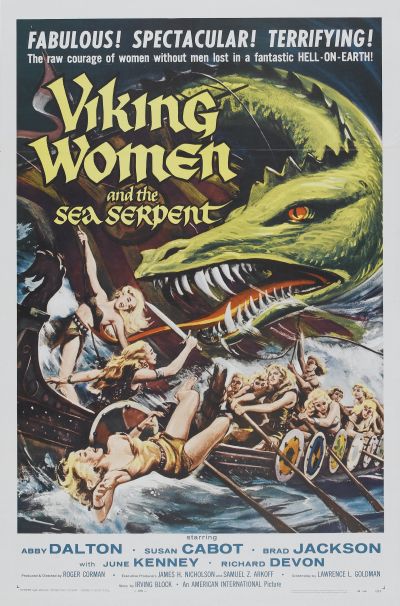 I can see why, purely for reason of brevity, the title above was preferred to the full one of The Saga of the Viking Women and Their Voyage to the Waters of the Great Sea Serpent, even though the latter is more accurate. For the Sea Serpent has a supporting role here, met once on their way in, and again on the way out – it’s much more about what happens in the middle. Three years after their men left, the women of the Stannjold clan leave their shores under the command of Desir (Dalton), trying to find out what happened to them. Encounter #1 with the monster leads them to be shipwrecked on the same shores of the Grimault tribe as their menfolk, whose king, Stark (Devon), has set them to work as slaves in his mines. After initially appearing to welcome the women, it becomes clear that Stark has plans for the new arrivals as well. Viking high-priestess Enger (Cabot) has her own agenda, however: having set her eyes both on Desir’s husband and, for more immediate and pragmatic reasons, Stark, she sabotages Desir’s first attempt to free the men.
I can see why, purely for reason of brevity, the title above was preferred to the full one of The Saga of the Viking Women and Their Voyage to the Waters of the Great Sea Serpent, even though the latter is more accurate. For the Sea Serpent has a supporting role here, met once on their way in, and again on the way out – it’s much more about what happens in the middle. Three years after their men left, the women of the Stannjold clan leave their shores under the command of Desir (Dalton), trying to find out what happened to them. Encounter #1 with the monster leads them to be shipwrecked on the same shores of the Grimault tribe as their menfolk, whose king, Stark (Devon), has set them to work as slaves in his mines. After initially appearing to welcome the women, it becomes clear that Stark has plans for the new arrivals as well. Viking high-priestess Enger (Cabot) has her own agenda, however: having set her eyes both on Desir’s husband and, for more immediate and pragmatic reasons, Stark, she sabotages Desir’s first attempt to free the men.